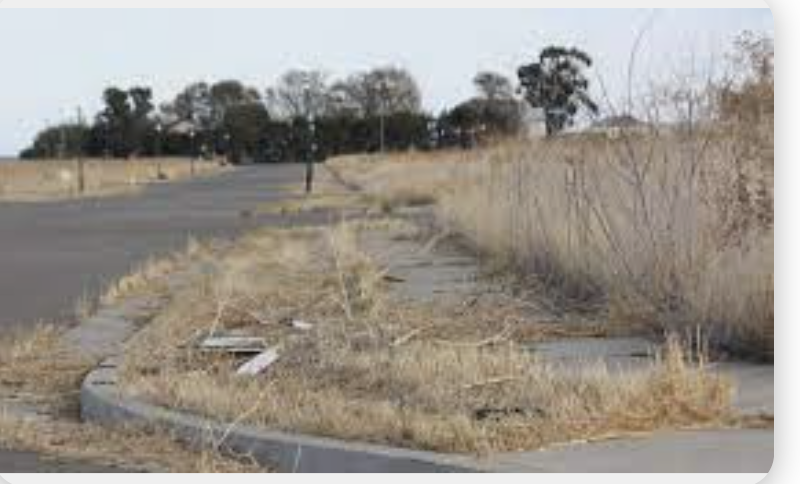This is why we can't have nice things — or anything, soon
/coming never
CEQUA [California Environmental Quality Act] needs to die so California can thrive
The article restricts itself to a discussion of California, but this is a national problem
California needs more homes, and the proposed Tejon Ranch development would deliver new housing for an estimated 57,000 Californians. But after 20 years, builders haven’t nailed even one stick to another – for reasons that reveal almost everything that’s wrong with California.
Located along Interstate 5 about 60 miles north of downtown Los Angeles, the development plan has something for everyone. A significant percentage of units are designated for low-income residents. Over 90 percent of the vast private parcel will be permanently set aside as open space. The homes will be “energy neutral,” with hundreds of EV charging stations. Significant funds are pledged for wildlife habitat and preservation of cultural artifacts. But nothing will ever be enough.
For more than two decades, developers have tried to build these now desperately needed homes, reaching multiple agreements with an alphabet-soup of environmentalist coalitions. But thanks to yet another lawsuit, a Los Angeles judge ruled in March that the entitlements process will have to start over.
In a recent disclosure to investors, Tejon Ranch Company warned that it may take another 25 years before any homes are built.
The reason for these delays, which are sufficient to deter even the most persistent California homebuilders, is the California Environmental Quality Act, otherwise known as CEQA.
Ronald Reagan signed CEQA into law in 1970 to ensure that state projects anticipated and mitigated “significant environmental impacts.” But this is California: within two years, state judges had determined that the phrase “state projects” meant any construction project that required government permitting of any kind – and that means all construction in the state of California.
Since then, CEQA has morphed into a beast that would be unrecognizable to its original proponents. Swollen beyond comprehension by decades of “clarifying” legislation, amendments, court precedents, and agency interpretations, CEQA has become the bottleneck that chokes and kills the good more than the bad, making California the worst place outside of a warzone for anyone to ever attempt to build anything.
…. CEQA is the reason that land, housing, water, electricity, oil and gas, lumber, aggregate, and even food costs so much in California. It’s a factor in the decision of major home insurers to leave California. It’s the reason the state’s freeways are pitted, potholed, congested hellscapes, while off in the remote bowels of the San Joaquin Valley, a Stonehenge-like monument to corruption rises ever so slowly, pylons to elevate the “bullet train,” consuming stupefying quantities of cement and steel, costing countless billions of dollars, that will quite likely end with a whimper.
Over the past four months, California’s Little Hoover Commission has held hearings to determine how you handle a problem like CEQA. Over 20 hours of hearings, the commissioners heard from Californians, including a cavalcade of special interests, all of them expert in leveraging the CEQA body of law to advance their own organizations and killer [sic] their competitors. Within a few weeks, the commission intends to send its recommendations to the state legislature.
There were exceptions among the grifters. One of the rare, genuine victims to testify was Dan Dunmoyer, representing the California Building Industry Association. Because his industry hasn’t navigated a profitable workaround that transmutes litigious, bureaucratic CEQA-generated gridlock into bountiful grift, Dunmoyer can tell you the true cost of CEQA.
He told the Little Hoover Commission that the average CEQA-required environmental impact report for a 200-home subdivision in the 1970s ran just two pages. Now the average is over 1,000 pages for the same scope of work. And best case, that report will cost the developer at least $1 million to prepare. More likely, after the inevitable litigation and bureaucratic micromanagement, the entire CEQA process will cost many times that, and consume years if not decades.
….
But CEQA, like the natural world it has evolved ostensibly to protect, nourishes a robust ecosystem. Each species in that system carves out a lucrative niche in a fantastic jungle of specialized and indispensable experts, academics, scientists, administrators, bureaucrats, judges, court personnel, professional activists, legislative staff, agency staff, accountants, carbon accountants, CPAs, attorneys, litigators, and tens of thousands of tradesmen who don’t care if they’re adding a desperately needed lane to Interstate 405, or reconstructing Stonehenge. For them, work is work and CEQA is a multi-billion-dollar industry, earning millions for some and sucking the life out of California’s economy for everybody else.
A common refrain before the commission was that CEQA doesn’t go far enough. One member of the public, useful to the professionals insofar as her unremunerated passion made their more calculated comments reasonable by comparison, claimed that without CEQA the genocidal assault against California’s disadvantaged would continue. Another volunteer, who wanted the commission to know that her bedtime reading was environmental impact reports, was embarrassingly candid: CEQA is a weapon to stop projects, she said, and that’s why we need it.
….
One disturbing takeaway from these hearings was its staid normalcy. From the tone of the remarks, mostly coming from attorneys representing environmental organizations or labor organizations, you wouldn’t get the impression that CEQA is tearing the life out of California’s economy. And when the discussion turned to serious recommendations for reform, most called for more exemptions instead of reforming the law for everyone. Make exemptions for low-income housing permanent! Enact permanent exemptions for renewable energy projects! Favor us, we’re the good guys!
But can CEQA be fixed? Can the process be streamlined, so, for example, last-minute lawsuits are no longer allowed? So that agencies and courts can no longer slow-walk applications and cases, killing projects by delaying them to death?
There are plenty of incremental ways to make CEQA less beastly, but most of them involve picking winners or introducing new complexity that will spawn as many challenges as it will alleviate. Such reform is, as Plato put it, cutting the heads off the hydra. The best thing the Little Hoover Commission can do is to recommend that CEQA be scrapped in its entirety.
The professional parasites need not despair. California and the federal government have plenty of other laws and regulations that guarantee projects designed to lower the cost-of-living – which is genuine social justice – will never see the light of day. Let CEQA die.
Pipelines, transmission towers, power plants, highways, refineries, reservoirs: they aren’t being built, and probably never will be again. Mineral mining for the wonderful new electric cars and windmills that are promised? Not in the United States. Oil and gas exploration? Over in ten years. Nuclear power plants? Desalination plants? Nope, and nope. The deindustrialization of America proceeds according to plan.


